No matter how you pronounce it, Kolkata is a big place to tackle in two days. But two days was all we had, so we tackled.
We didn’t want to go, but we had to! Cecilia’s India visa was expiring on the 14th of April, and I had to go home to pick up some freelance work.
Yep. After three months, work worth taking finally came knocking. These trips don’t pay for themselves! That said, backpacking is really not that expensive. If you eat and sleep cheaply, it can be more affordable to be abroad than to be home.
For example, even in big cities in India, it’s perfectly feasible to:
- eat breakfast for $2 US
- eat lunch for $3-5 US
- eat dinner for $3-5 US
- stay in a room that runs $6 US
- Ride the bus or metro around town for a dollar or two a day.
That’s about $20 US per day for eating and walking around if you’re frugal. It’s cheaper than staying home and moping around, that’s for sure!
We arrived at Kolkata’s Howrah Station by (inexpensive) 16-hour sleeper-class train from Varanasi.

Morning on the night train from Varanasi to Kolkata. The guy in the red shirt and his wife were the lovey-est couple in India.
Oddly, there were no rickshaw drivers to greet us upon disembarkation from the train at Kolkata’s Howrah station. There were hardly any rickshaw drivers anywhere. Something was different. There was a sense of modernity and organization in the air. Kolkata was DIFFERENT.
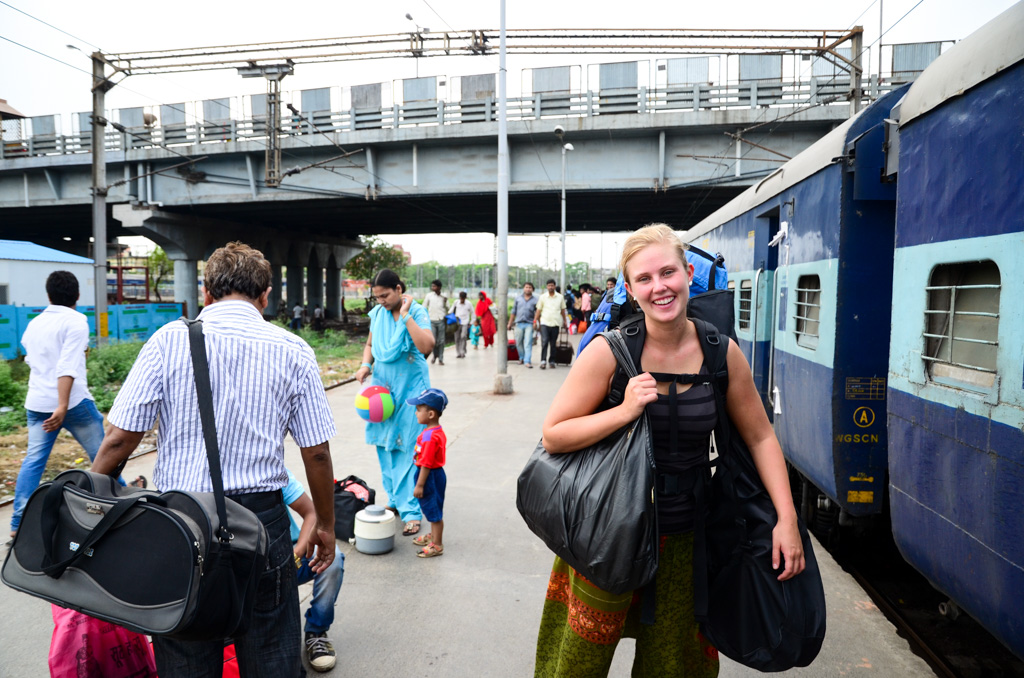
A tout-less late morning arrival in Kolkata.
From Howrah station, Kolkata proper is located to the east, across the Hooghly River, a distributary of the Ganga. Once you exit the station, there are a number of ferry companies located just across the road that’ll shuttle you to different points along the east riverbank. We chose the first ferry company we saw in the standard traveler way of “act like you know where you’re going even though you have no idea”, paid our four-or-so Rupees apiece and settled in for a short, loud ride across the river.
A man in his twenties with mangled legs stood about as tall as our knees and made rounds on the uncrowded ferry collecting spare Rupees. I got to thinking about India’s many poor.
What I thought: wouldn’t it be nice if there was a job for this person? If he’s going to ride the ferry all day anyway, why not find a way to give him self-worth and purpose? Even jobs as small as cleaning the boat or collecting tickets could be awarded to a man such as this. Why not?
There are plenty of instances of this throughout the subcontinent such as the young begging boys that clean the floors of the trains by pushing trash with their forearms while they scoot along the dirty surface and begging along the way. Would it be possible to hire said boys to clean the train for a wage?
Edit, 6/25/12: I know these views are a bit idealistic and don’t capture the big picture. But upon first exposure to such things, this is the direction my brain went. Things are more nuanced / complicated than I know, and I’m not offering a solution nor a grand overview. Just my feelings.
Since this post, I’ve learned that sleeper class is subsidized, and thus services hover at a bit lower point than the AC cars. It adds up. That said, I still prefer sleeper class to the higher tiers and am not complaining about the quality of service or cleanliness.
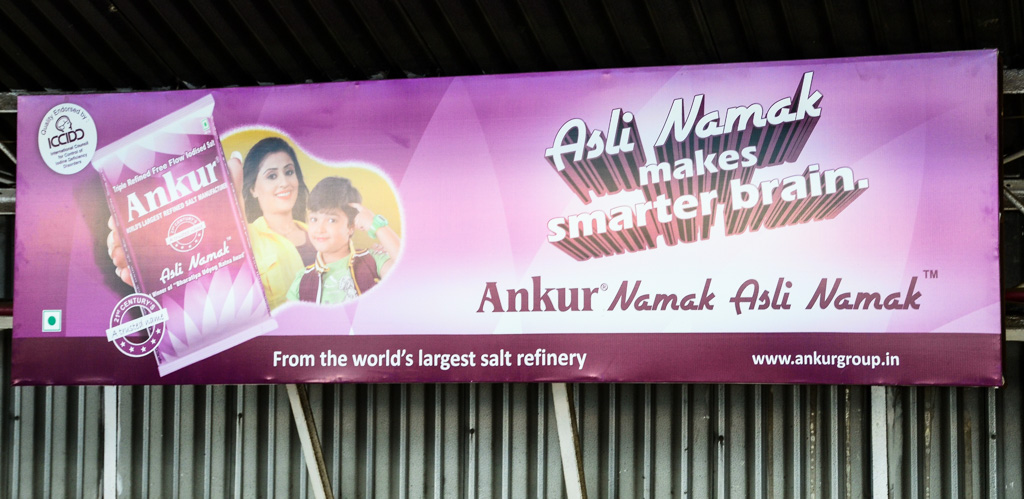
Copywriter need smarter brain.
Still no rickshaws on the other side of the river, so we jumped in an old black-and-yellow Ambassador cab. Something like 100 Rupees got us to Sudder Street, the primary backpacker ghetto of Kolkata and all-around good jump off point for activity in the city. Sudder Street is also a short distance from Mother Teresa house – a great place to volunteer if you have enough time to do so. Unfortunately, we didn’t this time around.
We needed a room for two short nights and settled on the second place we saw with a shrug.
The Hotel Paragon, down a narrow alley off Sudder St, was a dump, and the management were jerks, but it would have to do for the 350 Rupees we were spending for a double. We nicknamed the Spartan room “jail”. Returning to the room? “Going to jail.”
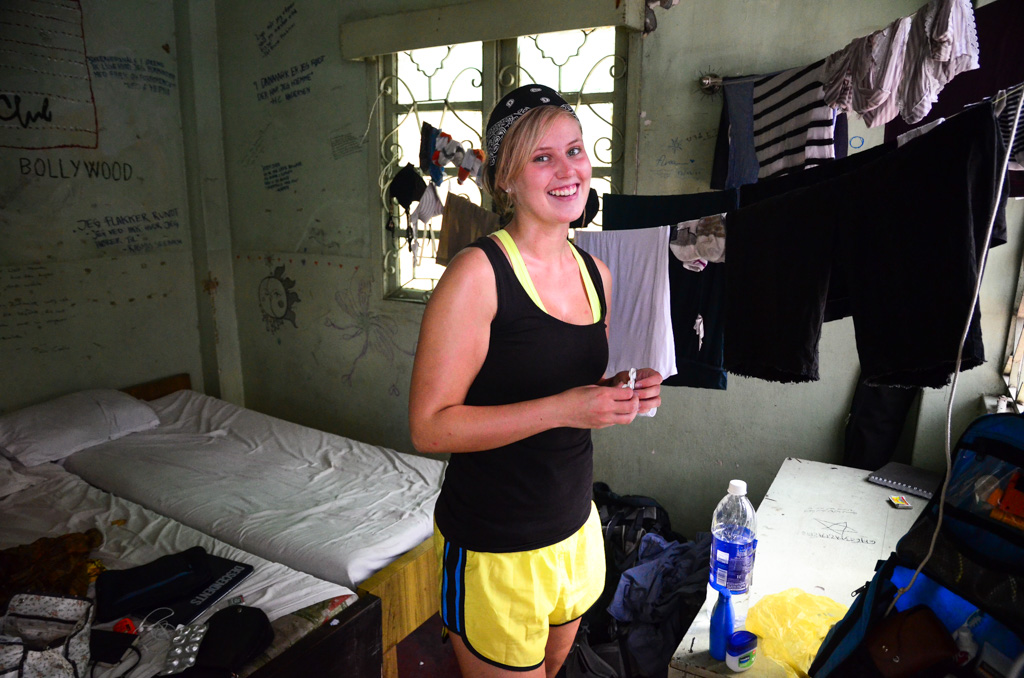
Cecilia serves a short sentence.
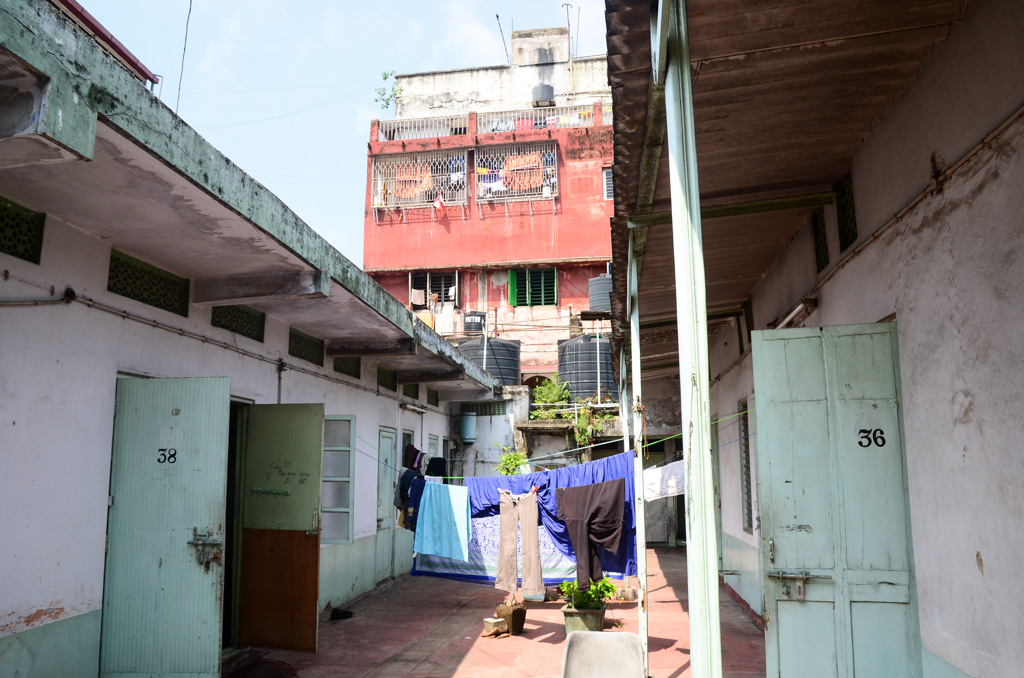
“jail” exterior.
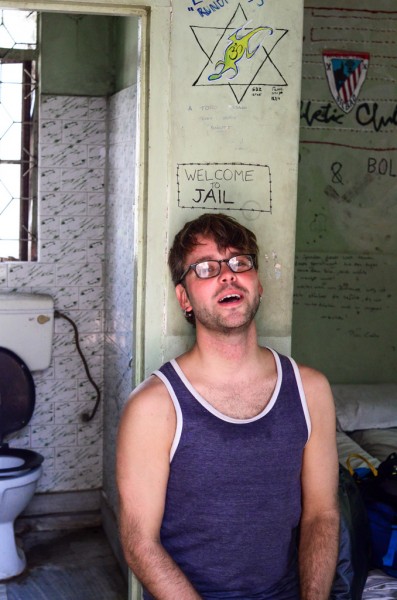
our contribution.
It was good enough, though. Jail was a dry, somewhat clean place to sleep, and we planned only spending sleeping hours there anyway – there was so much more to do outside the room!
The first thing we noticed about Kolkata was its air of charming, slightly decayed modernity that set it apart from other Indian cities I had spent time in, including Delhi, Mumbai and Chennai. Wide sidewalks, fully paved roads, buildings that were made to last, no cows. It felt a strange Indian mix of Chicago and Bangkok.
I like the sort of chaos and unpredictability that many Indian cities offer, but a little predictability/reliability wasn’t unwelcome in Kolkata.
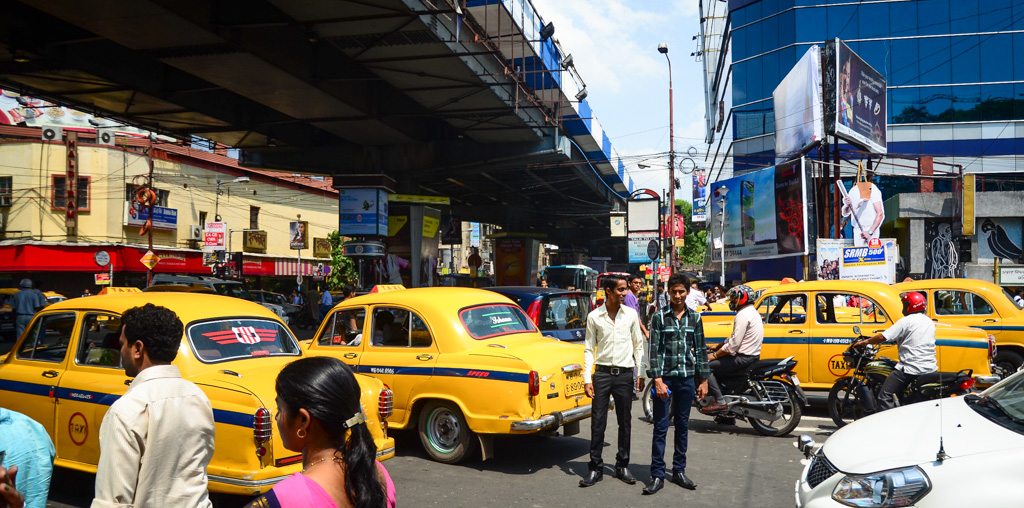
Thanks to the clean and orderly Kolkata metro, it was easy to get around, too. Though the main line of the metro only runs north-south, it hits most of the places on the general touristic list.
Kolkata’s British Raj-equivalent to the Taj Mahal is Victoria Memorial, and it’s an easy first stop in Kolkata. Take the metro to the “Maidan” stop for a short walk to the memorial grounds. Admission is 150 Rupees for foreigners.
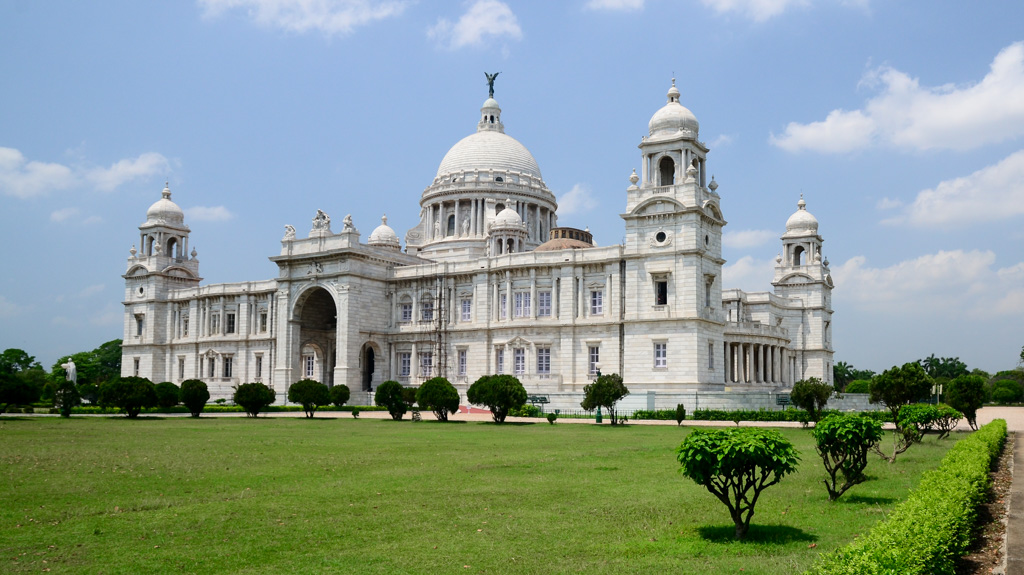
Victoria Memorial from the south. The 338 ft (103 m) high white marble tribute to British rule of India was inaugurated in 1921.
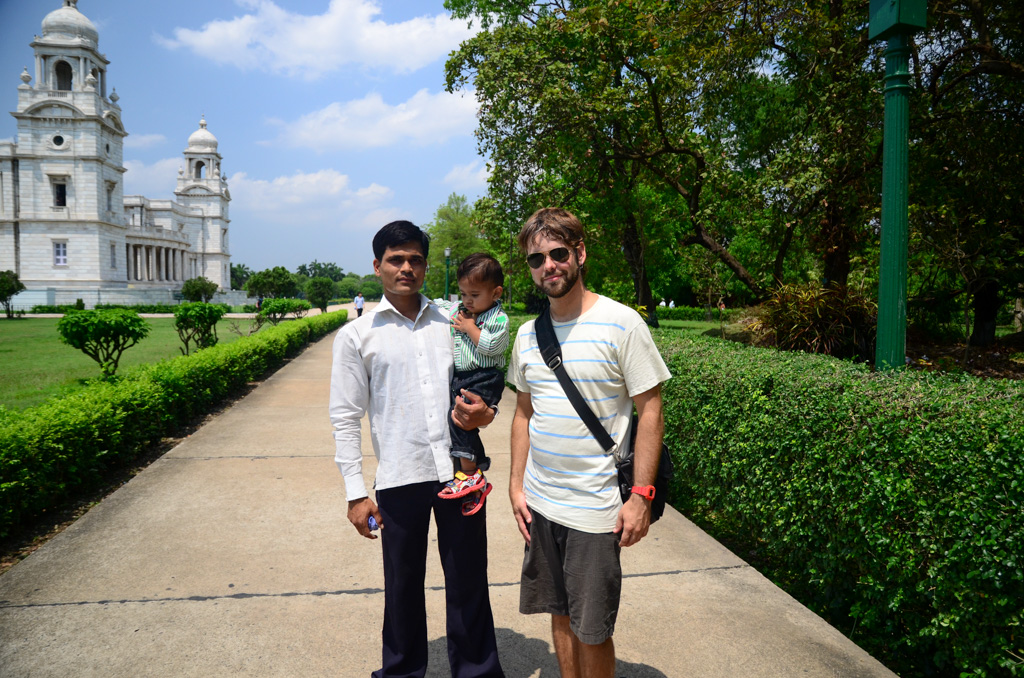
It was impossible to leave India without one last weird “sir, one photo” opportunity.
Again, it’s a tourist destination, and it’s only worth about 60-90 minutes if you want to tick the box and have other things to do. If you want to stay longer, please do – there’s a large museum that chronicles the history of the British Raj inside as well as rotating art collections. We kept moving.
Back onto the metro to the Kalighat Station and one last Hindu temple (my idea, even though we were both pretty templed-out after three months).
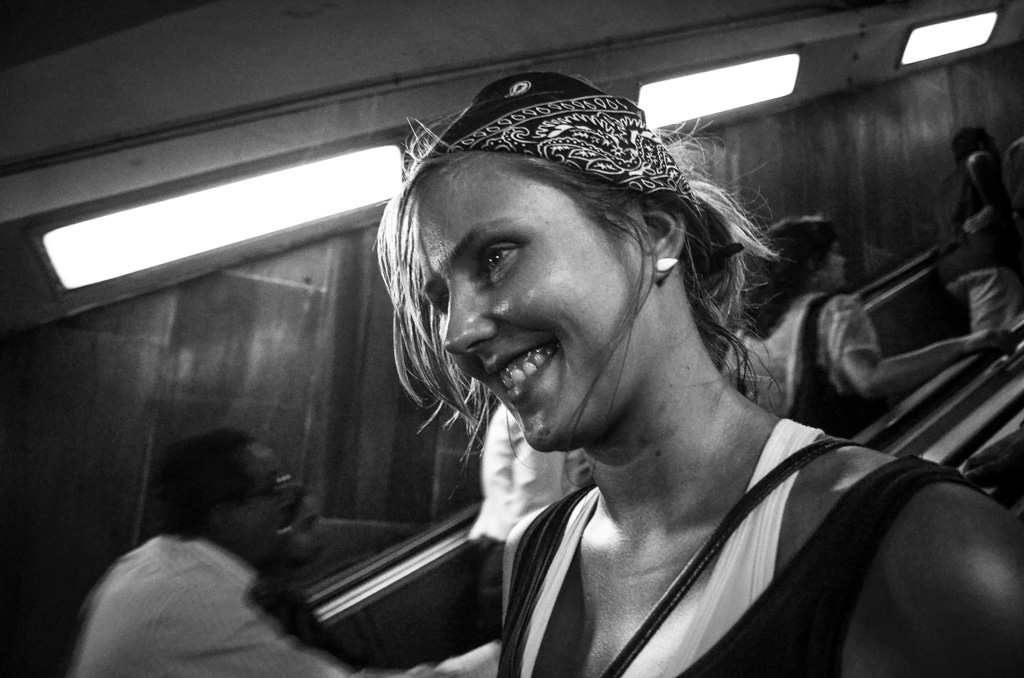
Kali was always an odd Hindu goddess to me – the sabre, the necklace of severed heads, the long, almost Maori-warrior-esque tongue sticking out of her mouth, and her regular stance on top of her husband, Shiva. I figured a major temple to Kali might be an interesting one. It was.

Goddess Kali. The priest at Kalighat explained to us that Kali sticks her tongue out to “apologize to her husband Shiva for dancing on him”. I don’t get it yet, but I like it.
The temple was fairly easy to find once you fought your way through the touts. Like any other holy site, there are rows and rows of merchants selling god/goddess-related trinkets, and plenty of them would like to steer you into their shop with an explanation that it’s a shortcut to the temple.
A brahmin priest who spoke pleasant English fielded us upon arrival at Kalighat Temple and like-it-or-not escorted us through the temple grounds.
We removed our shoes upon request and the priest sprinkled green-tinted water on our hands to “purify”. What was it?
“Holy water from the Ganga,” he smiled.
It felt a bit sticky/slimy.
Kali requires goat blood daily, so goats are ritualistically sacrificed each day on altars outside the main chamber of the temple. A few goats waited on death row while a temple worker chipped away at a previous victim’s skull with a machete.
It was time to see Kali herself. We were led into the main chamber of the temple. I expected the usual no-admittance “HINDU ONLY” sign I had become accustomed to seeing, but no sign of it – we could walk right in unfettered. Unusual.
It was a small room, maybe five meters long by three meters wide, and filled with moaning/shoving Indian men trying to get a glimpse of Kali. The priest motioned for us to enter the fray to sneak a peak. We did, briefly, and what we saw was somewhat unexpected/unsettling, and unlike any of the other Kali imagery I knew prior.

Goddess Kali @ Kalighat. Not my picture, but an accurate close-up picture of what we saw. Hey nerds: does this idol eerily remind you of some sort of “Neon Genesis Evangelion” Angel? Me too, nerds, me too.
The three orange eyes of Kali burned into me more than I would have expected – the energy that the devotees were putting toward the idol made it come strangely alive. Kneeling, wailing men grabbed at our ankles when we tried to leave. We shook them off as best we could and kept moving, a bit shaken ourselves. That was enough Kali for a while – we headed back to the metro with wide eyes.
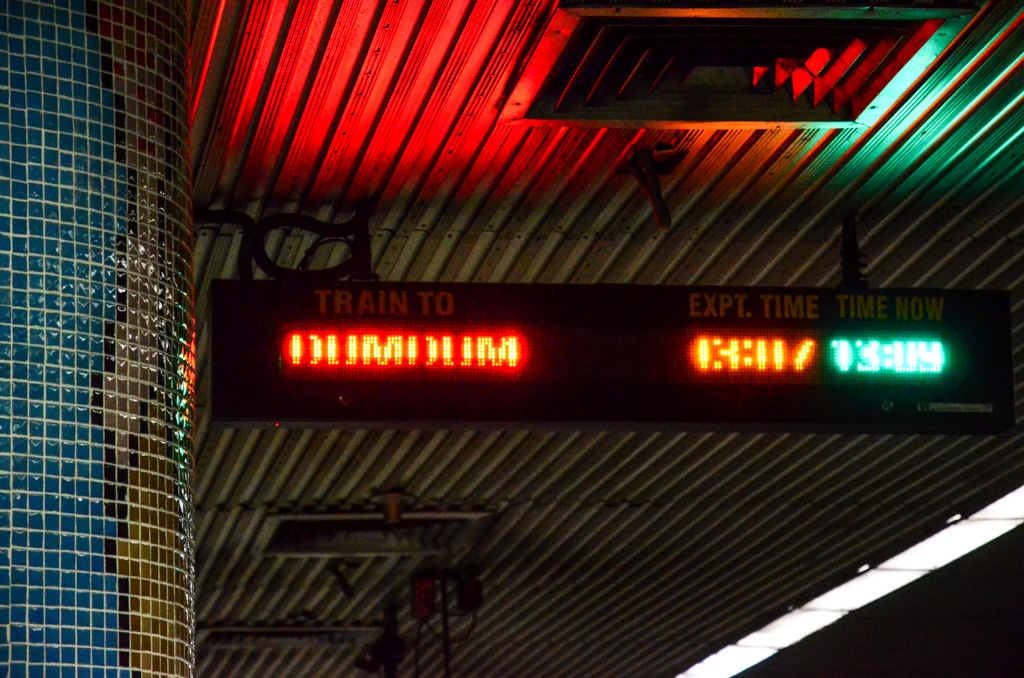
Now boarding: the northbound metro to Dum Dum.
Two Lonely-Planet sanctioned tourist stops was all we had time for in our two short days. We devoted the rest of our daylight to wandering around in Kolkata’s decaying colonial streets. The weather was hot, but the people were nice. Lots of smiles! Most of the below pictures were taken north of Sudder Street in and around the BBD Bagh area.
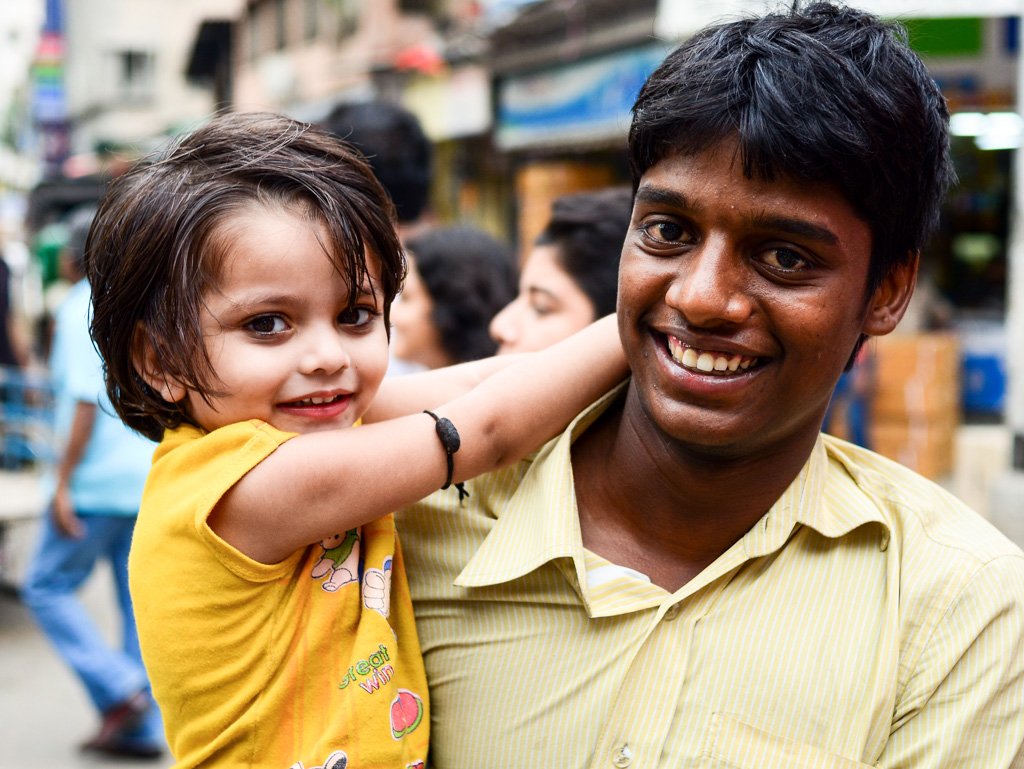
we were eating ice cream in the street. she wanted to introduce herself, and did.
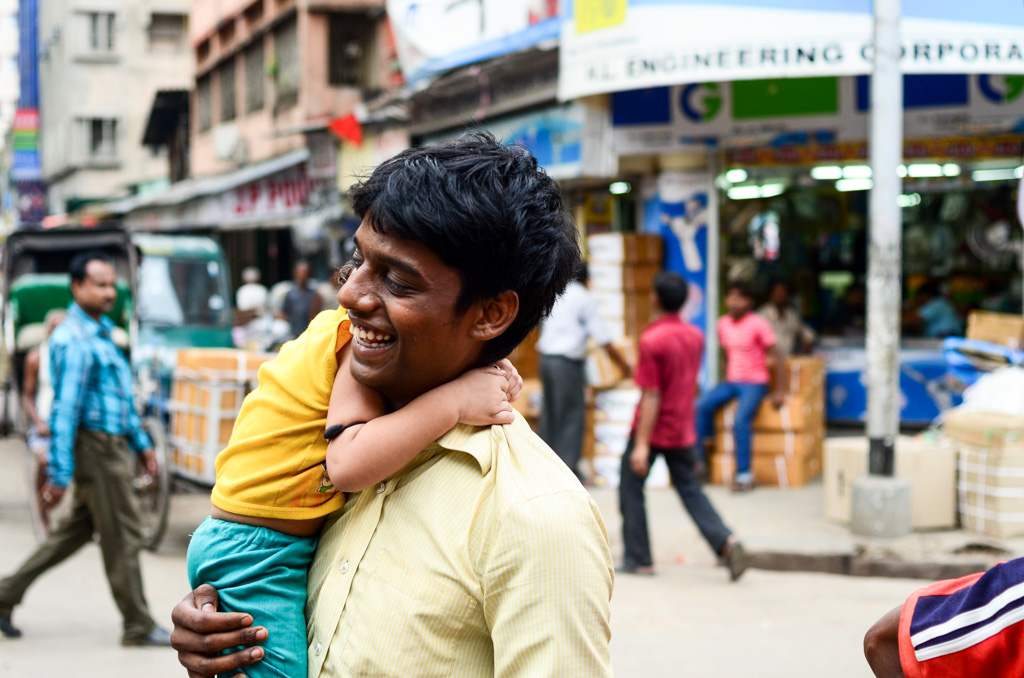
bye!
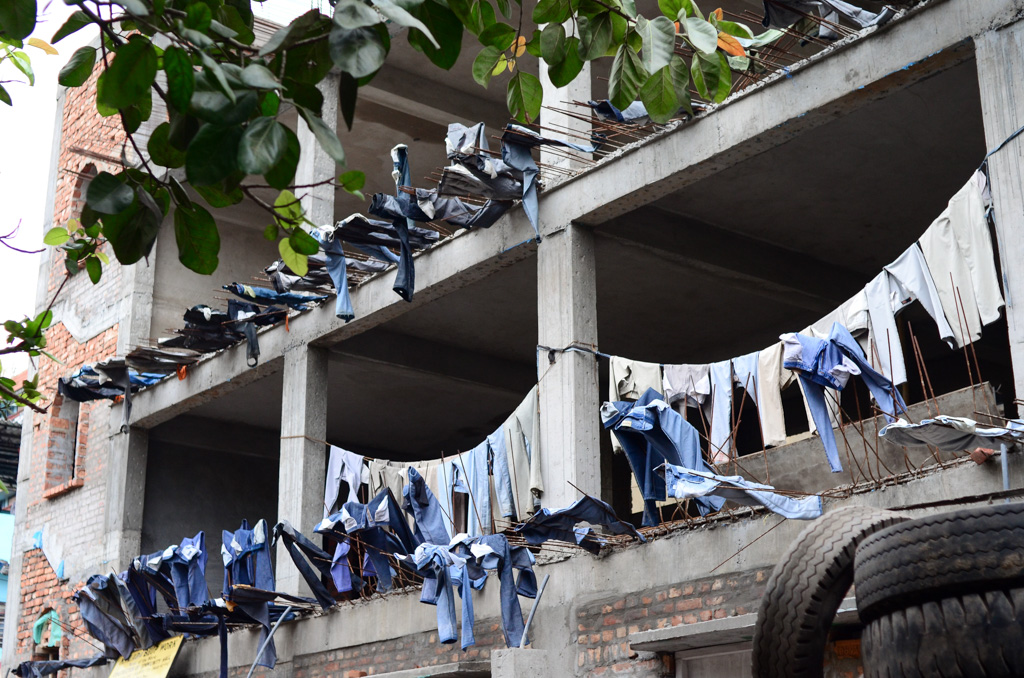
blue jeans drying en masse.
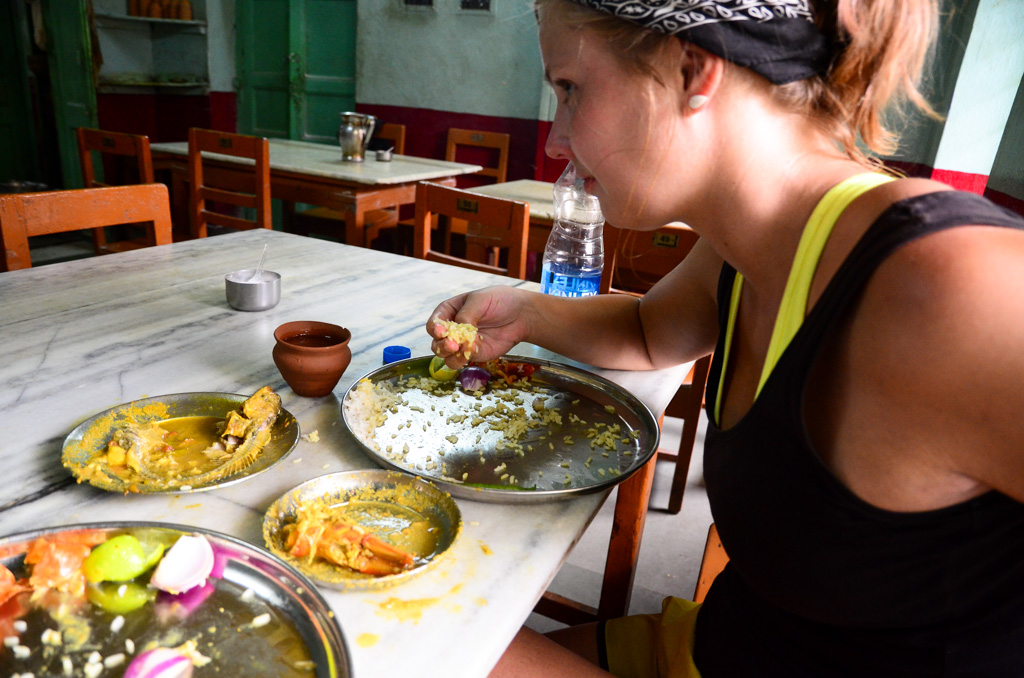
Bengali lunchtime. Tangy, saucy fish and giant prawn with a near wheelbarrow full of rice.
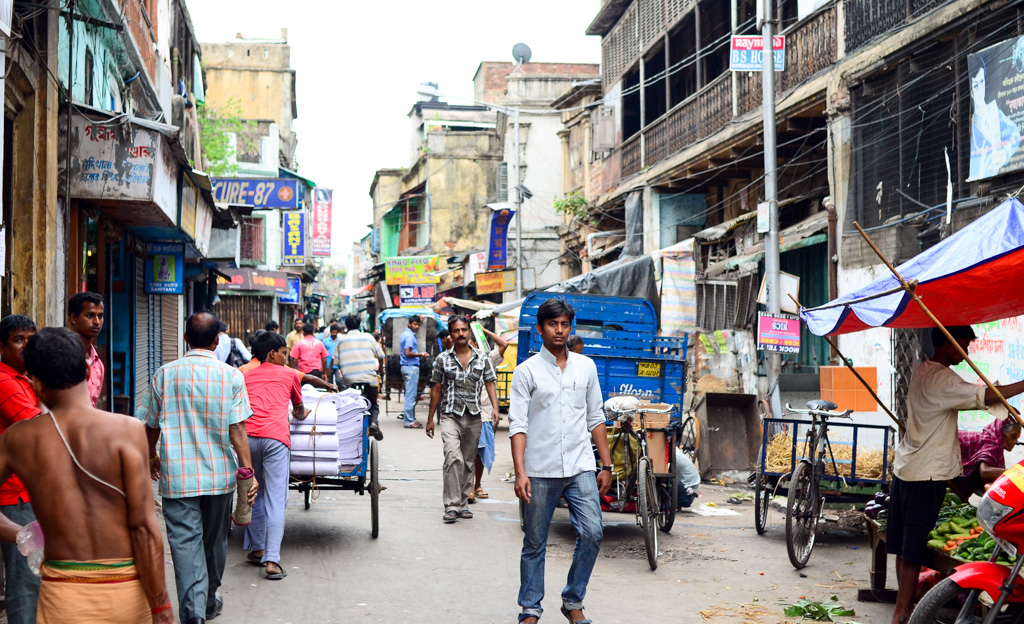
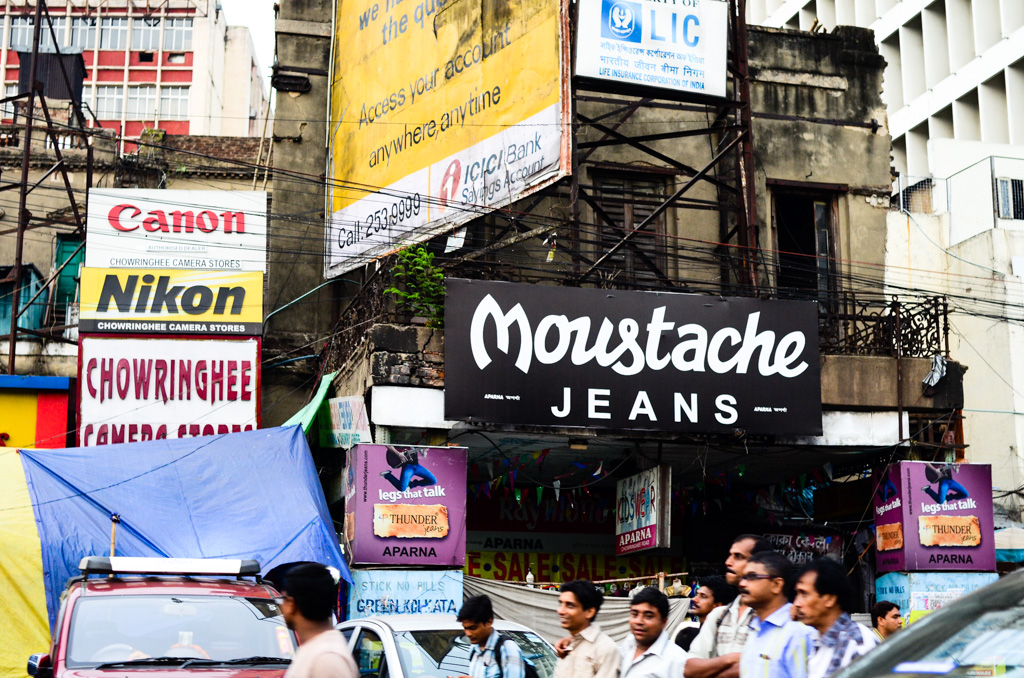
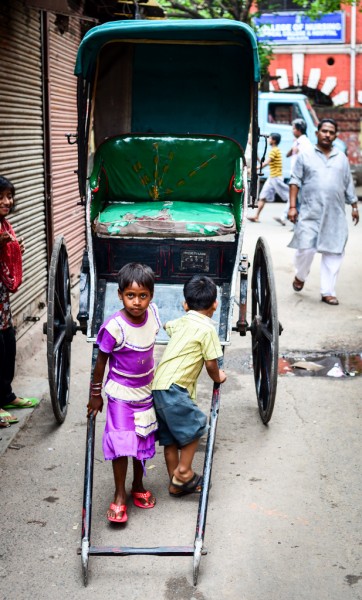
Kolkata is one of the few remaining places you’ll find manually-pulled rickshaws in regular use.
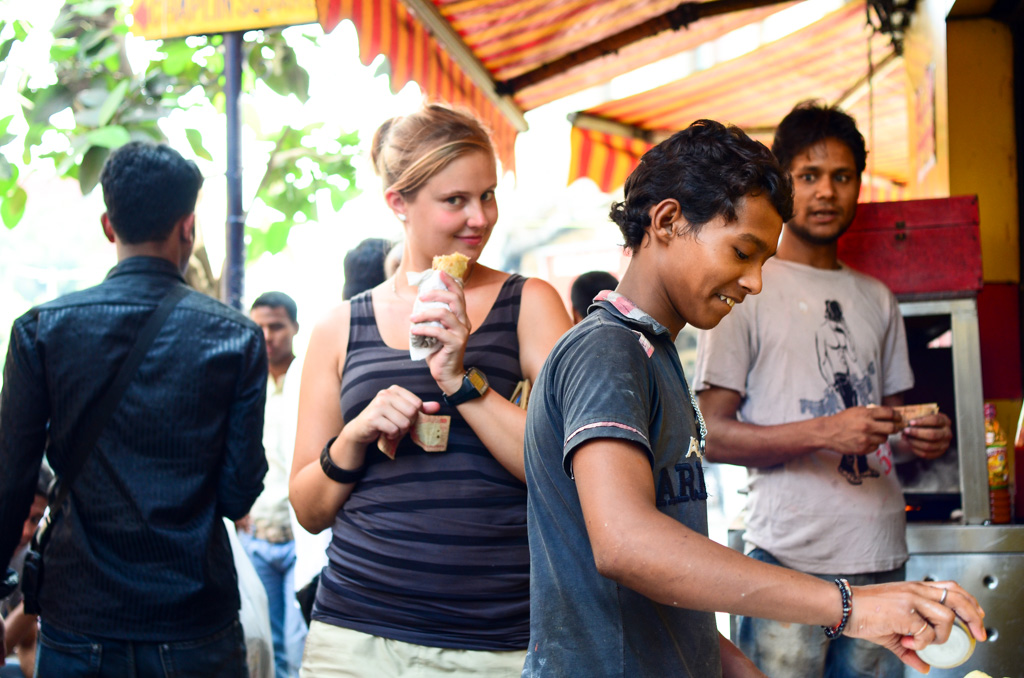
There’s a food item I have fallen in love with in Kolkata: the kati roll. At base level, it’s kabab meat rolled in a paratha. Add onion, hot sauce and egg and you’ve got my favorite version. It’s about as easy and tasty of street food as I could ask for for 30 Rupees, and feels like a great combination of Mexican, middle-eastern and Indian. Kati roll shops dot Kolkata – just look for the busy stalls that look like they’re selling burritos.
Would I have liked to stay in Kolkata for more than two days? Yes, definitely. If I was just touristing, four to five nights would have been great. If volunteering, more.
BREAKING SAREE UPDATE: Cecilia bought a saree in Varanasi, but we didn’t have time to finish it there. In Kolkata we achieved the goal – a completed, wearable saree! We hired a tailor just north of Sudder Street to do a 24-hour rush sewing job on a blouse and petticoat (the previously missing elements) and picked them up just before we left for Kolkata International Airport. Close call, but mission accomplished! Here’s the result:
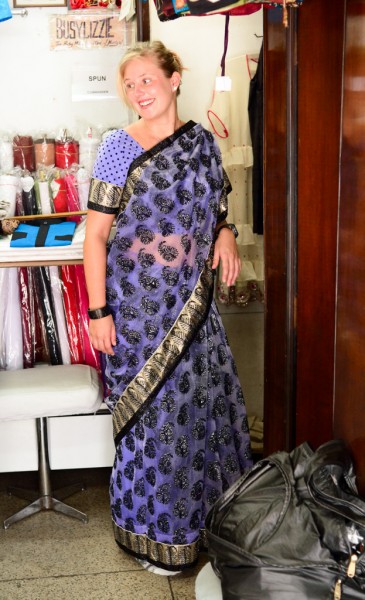
feeling a bit silly, but looking cute!
On April 12th, 2012, we hoisted our backpacks one last Indian time and climbed into a yellow ambassador cab, destination Kolkata International Airport. It was hot, traffic was ugly, and my stomach started tying itself into the according “what would we possibly do if we missed our flight” knots. For distraction, I took Cecilia’s acoustic guitar out of its case and played the few songs I could summon. Passengers in other open-windowed, gridlocked vehicles shot us confused smiles.
We arrived at the international terminal and found it quiet – too quiet. Were we in the right place? So it seemed. There were maybe 150 people in the whole place, including staff. Strange for a city of 15 million / country of over a billion!
The only other backpacker at the sparsely populated airport was another Finn. He was carrying the tiniest backpack I’d seen and dropped hints via his gravely voice that he was smuggling (internationally, no less) small amounts of opium. We quickly agreed to dislike like him and edged away. Nothing good could come of hanging with this dude.
Our airplane was late to arrive, but that didn’t stop the Indian passengers in the terminal from forming a meaningless queue to get on a vessel that wasn’t even there. They stood for thirty empty minutes without complaint. We sat it out and sauntered down the jetway to an underbooked flight and took our seats without issue. Oh Indian crowd dynamics, how I’ll miss you!
It was sad to go.
My trip to India was over, and for practical purposes, I was headed home to St Louis, Missouri, USA – but not directly. As things worked out, it was cheaper for me to first fly from Kolkata to Kuala Lumpur, Malaysia via Air Asia than to go straight home. I would have a total of twenty hours to kill in KL (with Cecilia!).
Was I putting off the inevitable? Definitely! I had never been to Malaysia before. Can you blame me?
NEXT STOP/LAST STOP (for this trip): TWENTY HOURS IN KUALA LUMPUR
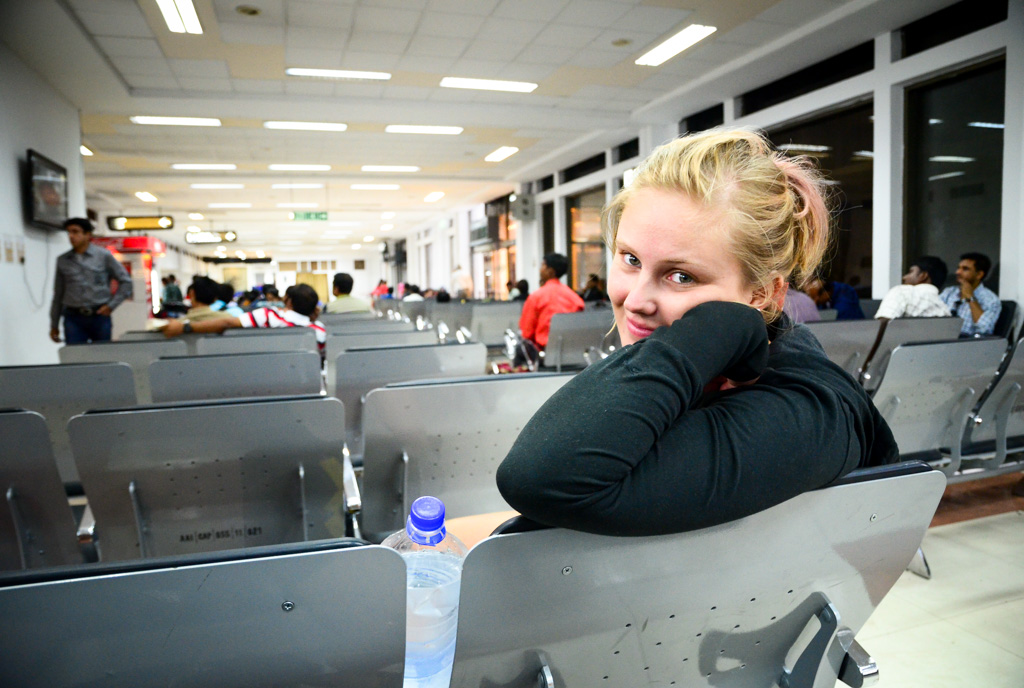
Kolkata’s ghost town of an international terminal. Bengal, India.

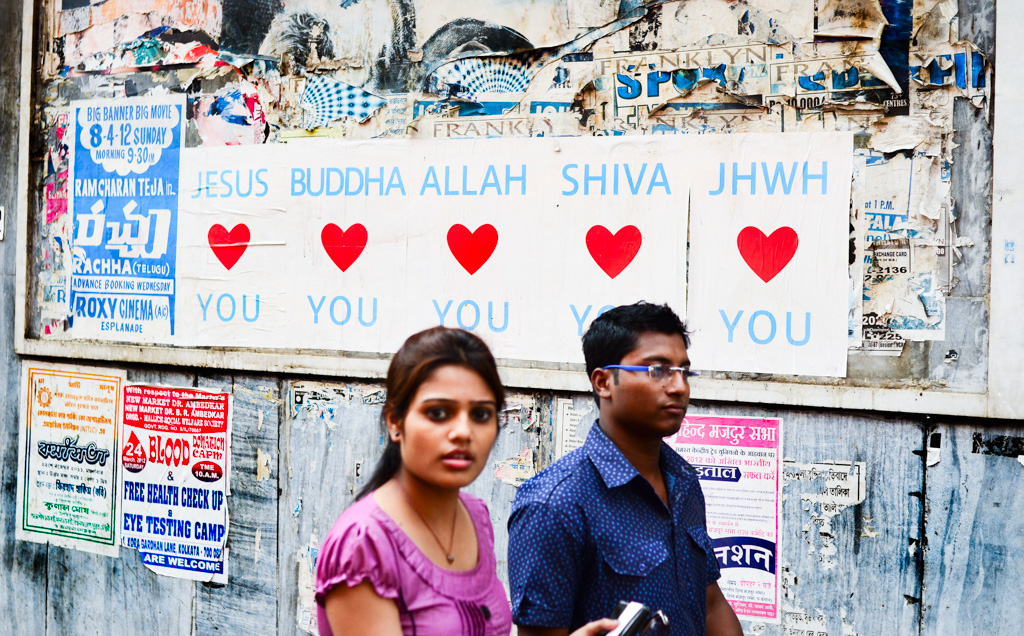






very nice travelogue. very nice pix. ‘sir, one photo’..yes, that’s funny but then, think about it..he gets a photo with you once and he gets boasting power for the next few weeks !! He would’ve told a 1000 people that he took a pic with you. did you enjoy the celebrity feel?
I enjoyed it / was quite confused by it for the first few weeks, but after that, it became somewhat tiresome, to be honest. Not only that, but once the flood gates are opened to the “one photo” game, it never seems to end and can become quite time consuming (we could have done photos for hours in Ooty, for example). I’m totally fine with taking pictures with anyone, but let’s have a coffee and/or a conversation first!
Hello matt,
thanks for taking the time to reply.
>> if you are not complaining about the sleeper class then you are a very generous guy. I do, all the time. the reality is that India’s poor can now afford to pay a little higher fare and expect slightly better service. but the political parties that have held the railway ministry portfolio haven’t raised fares due to cheap populism. not only does this push the balance sheet into red it also starves the funding for much needed modernization.
this was a huge political issue a few months ago and the very competent railways minister was forced to resign by his party supremo for raising fares.
>> like I said, there is no dearth of unskilled jobs for people willing to do that. begging is however a culture that is passed on from generation to generation. I am sure you are aware that begging was removed from most of europe by making it unlawful. in UK there were labour camp like places called workhouses in the 19th century where beggars were sent. dickens’ oliver twist is inspired by his experience with those.
historically India has had a more permissive attitude towards begging as it was seen as a way to suppress self and arrogance and thus a spiritual experience. around 2300 years ago, chandragupta maurya, who ruled the largest Indian empire ever gave up everything at one point in life and continued life as a traveling ascetic, surviving by begging. this tradition was alive even a few decades back. even today, aspiring monks, many of whom come from quite affluent families, start their monkhood with a period when they have to live exclusively on proceeds of begging.
there is however a major difference when able bodied men and women beg just because they are too lazy to work and it would be interesting to see how modern India reconciles these two contradictory factors.
>> Indians come in all shapes and sizes. some would be comfortable with PDA and some won’t. it’s a completely personal decision that by itself doesn’t say much about the couple.
my GF and I won’t be comfortable with much more than hand holding and the occasional hug in public. does that make us old fashioned or as some americans we met tried to argue, oppression of women !! 😀
we were both doing PhD’s in theoretical physics at the time (they didn’t know that) and she is fiercely independent and articulate to boot. I believe she, and others like her would know when and if she is being oppressed ! 😉
(this is not strictly a reply to your point, just a general observation)
>> the problem of corruption in US is different, there isn’t much of it at lower levels unlike in India where it is pervasive. in most cases however this takes the form of a small ‘tip’ to the clerk who clears your file or issues your ID card. given that the service charges are usually low this isn’t usually a problem in reality. it does leave a bad taste in the mouth however. oh and these type of people do usually give concessions to the poor !
at the top level in US there is much alignment of interests among the elites, leading to a mutual back scratching society where everyone looks after each other at the cost of the average joe. Indian elites OTOH are too fragmented among linguistic, regional and sometimes professional lines to do that.
even when there is corruption at the top, there are always people from the ‘other’ camp who would want that information outed by any means. this acts as a natural balancing mechanism of sorts.
>> corruption in low level flunkies is actually a remnant of the colonial era.
I don’t know if you know this but in those times Indians were paid half to one third of the salary of brit employees for the same job and rank. naturally, most had to compensate for the very low pay by ‘other means’. other jobs were of course not available or even worse paying, workers unions not being allowed at the time. this institutional culture of bribe taking was unfortunately carried over at independence because we decided to continue the british officialdom structure with all its problems in stead of starting afresh.
hopefully this will change with increased salary of govt workers and stricter anti-corruption laws that are currently in legislation.
>> thanks for clearing that up about the priest, then you did absolutely the right thing. it’s what I would have done. your current write-up does tend to give the wrong impression.
>> how can a fellow passenger on this round bluish ball shaped space vehicle called earth ever be alienated from another ?
you mentioned varanasi, for the last 1700 years, long before environmentalism became fashionable or the phrase global peace was invented, priests there have started every morning with a prayer for peace and happiness of every creature on earth from the smallest to the largest, irrespective of race or species, including trees and plants. (incidentally this was long before life in plants was proved)
‘vasudhaiva kutumbakam’ my friend, the whole world is one family.
Loved your piece. I was in Kolkata in the last week of April visiting my mother. You captured the essence of the city very well. Great job! I spent my college life in Kolkata and loved it inspite of all the chaos, the grit, grime and poverty. Glad you loved the kati roll. I personally have stopped eating street food in Kolkata on my frequent visits, as after years in the US, my stomach can’t take it any more. I end up eating only at fancy restaurants and shopping malls, but I do miss the street food!
Thanks Som! I wish I had more time to explore the city a bit – the feeling of the city and people was really quite good. I hope to return in the future and see the things I missed!
hello matt, nice travelogue.
a few points though.
>> your comment on jobs and corruption sounds like a 5 year old giving recommendations on solving modern physics problems, no offence intended. 😀
most beggars do not want jobs, because begging is easier and often well paying. there is never any dearth of unskilled jobs in big cities like kolkata which attracts thousands of migrant workers daily from neighbouring states and bangladesh.
Indian railways heavily subsidizes the sleeper passenger class, the one you traveled on.
Indeed the whole sleeper class is massively loss making but govt keeps the ticket fare incredibly low so that the poor can travel when needed. remember, whatever you paid for the ticket from varanasi to howrah, it cost Indian railways more than double that amount to transport you and your luggage.
the rail compartments are cleaned at the start and end of journeys for shorter routes and in addition, once or twice during the journey for longer ones. if you wanted better service you should have traveled 3 AC at the minimum, which is meant for the middle class and is not subsidized. since you were traveling sleeper class you were anyway getting more than double of what you paid for. 😉
can they afford to hire even *more* people for the sleeper class ? the answer is no, not unless they raise fares. service would improve when India’s poor can afford to pay higher fares.
the people whom you mentioned as cleaning the coach because IR doesn’t are actually practicing a form of begging, the actual cleaning they do is minimal.
regarding corruption, every country, bar none has seen massive corruption in its developing phase, your own country included. think of how the US was during its developing phase in 19th and early 20th century and you will have your answer. how was it built ? with slave labour and underpaid and exploited chinese labour. there is still major amounts of high level corruption in US, think of how the bail out package worked out for the banks.
in fact the lobbying system that you have in US legislature is a form of institutionalized corruption. in India members of parliament would be disqualified and impeached for that kind of thing.
>> no idea why you thought that couple on the train wasn’t Indian. rather pre-conceived stereotyped notions on your part. when you travel abroad it would help if you have a more open mind.
>> kali seems weird because it is a goddess that did not originally belong within vedic hindu fold.
it was the goddess of semi-civilized tribes that used to live in the area around 2000 years ago.
unlike christianity which demonized earlier gods and religions (literally ! the goat headed and footed devil for example used to be an european pagan fertility god) hinduism accepted earlier gods into its fold and often times modified religious texts to accord them a place in it.
>> with all due respect, not paying the temple priest after accepting his help was rather poor form on your part. you could have told him at the start that you were not going to pay, would have saved the poor guy some time and effort. after all guiding people is his profession.
it’s like going into a restaurant, having lunch and then refusing to pay because you didn’t believe in the cuisine !
>> lastly, urchin ? really ?
Hello thinktanker!
Well, my goal was to learn more about India, and sometimes providing opinions (or even bad information) gets the good (what I mean is, thanks for the info!).
I like traveling in sleeper class and am not complaining about the condition of the cars, but I do wish there was some way to help generate jobs through needs that everyone can see. I didn’t know that sleeper was subsidized, so that answers my question why the service level is different than the AC cars.
You’re right – the comment about the Indian couple on the train is tasteless. I was trying to make a bit of a joke, and it may have fallen flat. The only reason I even said that was because I saw such a lack of public affection between Indian couples throughout my trip. I liked seeing these two enjoying one another’s company. It’s nice!
I agree wholesale on your comments on corruption, and know that my country has a huge problem as well. The US has an unbearable, systemic problem of corporate control of congress, and it’s seriously limiting our potential for growth and change. It’s swallowing us whole.
I may have forgotten to mention in my description of our visit to the Kali temple that we never asked for a guided tour and the priest simply wouldn’t leave us be to look at the temple for a moment by ourselves. We made it very clear up front (and repeatedly) that we would rather be left alone if his intention was to solicit a donation. We also had no intention of taking advantage and I don’t feel that we did. I may revise my wording on the Kali temple description to reflect this better.
Urchin is a pet name, c’mon! Kid is cuter than cuter than cute, and friendly as can be. It’s not meant to be taken straight out of the dictionary. Her little visit with us was a highlight of our couple of days in the city. 🙂
Hope I haven’t alienated you too much – I really like India and am anxious to visit again. For now I have to operate from a limited knowledge base. But I’m learning!
Well written post, albeit misinformed in some cases. Two things that should be pointed out:
1) You should really talk to somebody who is well informed about India regarding the creation of jobs and their (non) execution here. All those jobs that you mentioned do exist and are assigned a payroll , albeit are not executed.
2) Do look up urchin before you use the word the next time around. That kid with a doting guardian did not look like one at all. 🙂
I respect people’s opinions for what they are, it was just my intention to make those opinions informed ones.
Thanks for commenting, Shreyash.
Admittedly, I know very little about the inner workings of India – I can only think out loud about it and hope someone informs me :). I see what I view as opportunities for employment/improvement and I just have to say something! Would love to know more.
Oh! And use of the word “urchin” = like calling a fat guy “slim.” Y’know!
Awww, you’re making me want to go back! Such an adventure. Also, love the photos!
Well c’mon then! Work can wait 🙂